2017 Pivot Switchblade Team 29/27.5+ XTR 1x
(discontinued)
| Where To Buy | |||
|---|---|---|---|
Free shipping on orders over $50 (continental U.S. only).
International shipping available. Some exclusions apply. |
|||
Free shipping on orders over $50 (continental U.S. only).
International shipping available. Some exclusions apply. |
|||
Feature by Brandon Turman // Photos by Lear Miller and Brandon Turman
Chris Cocalis, the President and CEO of Pivot Cycles, was once described to us as having the ability to see the matrix before his eyes while looking at any new bike. From his humble roots as a college kid making hodgepodge frames with a wobbly drill press to the creation of his first bike company, Titus, the man has decades of experience in a constantly evolving industry. His creations and ideas make him one of the most respected names in the bike world, and his detail-oriented approach is paying off.
Today, despite Pivot's impressive growth since the company's launch in 2007, Cocalis is still involved in nearly every aspect of day-to-day operations, including frame design. The bikes the company makes are driven by a combination of what Cocalis wants to do, consumer feedback, and where the company sees things going. Cocalis and Pivot aren't afraid to experiment or try new things, and they test dozens of different concepts and prototypes every year.
"You don't know where to land if you don't go too far," he told Vital, and it's this way of thinking that lead Pivot to create their newest bike - the Switchblade.

Pivot Switchblade Highlights
- Carbon frame
- Compatible with both 29 and 27.5+ wheel sizes
- Fits 27.5+ tires up to 3.25-inches wide
- Fits 29er tires up to 2.5-inches wide
- 135mm (5.3-inches) dw-link rear suspension with upper clevis and linkage and double wishbone rear triangle
- Designed for a 150mm (5.9-inch) travel fork, fits forks up to 160mm (6.3-inches)
- New long and low geometry
- Short 428mm (16.85-inch) chainstays
- Front derailleur compatible with stealth E-Type mounting system
- Cable port system for easy internal routing of shifters, brakes and droppers and full Di2 Integration - can tension cables to prevent rattling
- New ultra-quiet low durometer rubberized frame protection in all key areas
- Two bottle mounts, with clearance for a large bottle in the frame with an easy flip of the shock
- 27.5+ spec: 40mm inner width DT alloy or Reynolds carbon wheels and Maxxis Rekon+ 2.8-inch tires
- 29-inch spec: 25mm inner width DT alloy or 28mm Reynolds Enduro carbon wheels and Maxxis High Roller II 2.3-inch tires
- Frame weight: 6.4-pounds (2.90kg, size medium with rear shock)
- Complete 27.5+ weight: 27.71-pounds (12.57kg, size medium)
- Complete 29er weight: 27.67-pounds (12.55kg, size medium)

From Prototype To Production In Five Years
If you envision a model year 2010 29er, what do you think of? Big wheel bikes at the time were a far cry from the quick handling, capable, and rally-worthy steeds on the market today. As a result, many aggressive trail and downhill riders wouldn't even give them a second glance. Around this time Pivot began prototyping a long travel 29er frame they hoped would drastically improve the ride.

"There's a fine line between being cutting edge and being a freak show. I always try to be leading edge, but not over the edge," remarked Cocalis as we walked through the frame's history. "You have to go through things in steps in terms of what the market can accept."

The prototype frame they crafted in their in-house machine shop was to be the Mach 529, though the bike was never released to the public. Pivot's goal with the first 529 prototype (above) was to address problems that plagued 29ers up until that point. These included frame flex, long chainstays, truck-like handling, and more. Actually solving those problems would take several years due to a variety of roadblocks they ran into along the way. Prototype number one used an interesting eccentric pivot concept in the upper suspension link, but was shelved due to bind under loading in fast corners.

Pivot began playing with new stiffness solutions on the second prototype, and developed the basic design of the clevis that would eventually be used on the Mach 6 in the process. This allowed them to get the leverage curve they needed without messing up standover height or moving the shock to the middle of the downtube. The bike worked decently well, addressing some issues on the previous prototype, and a small group of Pivot employees and dealers lobbied to push the bike to production. The whole package wasn't ready yet, said Cocalis:
"Part of me from the business side should have probably launched the 529 during that period. It would have grown our company a lot and we would have had success, but deep down inside I was like, 'I don't want to ride this bike. It's in a category that I love to ride, and I will always pick another bike.' I was upfront with dealers, and I said that with the technology that we have today I don't think this is worthy of what we put out. It's either great or it's not great."
Right around this time 27.5 (650b) wheels began to pop up, and the 529 project was put on hold. Concepts they learned from the 529 prototype process would eventually work their way into the Mach 6 - Pivot's first 27.5 bike.

Fast forward a few years and carbon was now a reality for the brand, axle standards were widening, and good 29er wheels were finally available, so they took the project up again. They added key features they learned from creating the Phoenix DH bike, including the design of the upper linkage. Pivot worked with Shimano to create the side-swing E-Type front derailleur, and in combination with a widened rear axle they found enough room to create a rear triangle with a double upright. The lower link was widened as well, and the combination drastically improved rear end stiffness. The bike's geometry wasn't final, though, and they still had some shock rate stuff to work out. Plus-size tires were also beginning to emerge, calling for attention and trail time.

After years of prototyping and testing, they arrived at a long travel 29er that's torsionally 30-40% stiffer, rivaling even the second version of the Mach 6 Carbon. Combined with incredibly short 428mm (16.85-inch) chainstays, Pivot solved the issues they set out to address years ago. The final test mules were crafted in both carbon and aluminum, as carbon allowed them to push several design concepts even further.
On trail testing along the way included hundreds of rides in Arizona, Utah, and Pennsylvania under everyone from Pivot engineers to Pro riders.
Pivot's Whole System Approach
When we do long term reviews of bikes here at Vital, we always consider the impact the components have on the overall ride. A shoddy set of tires or poor suspension can have a drastic impact on how much we enjoy a bike, for example, and Cocalis realizes this. He's a firm believer in thinking about bikes as systems. "It's not just about the frame," he seemed to add repeatedly. Pivot's willingness to work with other companies to improve the system is apparent in many bicycle components. Side-swing front derailleurs, zero-stack headsets, and press-fit bottom brackets are among many they've been heavily involved with, each allowing designers to create better frames (and systems) in one way or another.
Another instance is the WTB Hightail saddle, which Pivot originally co-developed for use on their Phoenix DH bike. Thanks to a clever cutout in the back and wider rails, it gives a full inch more tire clearance when the suspension is bottomed out. The new Switchblade will make use of the saddle on size XS bikes with some additional padding, allowing the bike to fit more riders.
When you look at the full range of Switchblade bike builds, you'll note that they all use custom grips, nicely padded saddles, OneUp 1X expander cogs for added cassette range, and good tires regardless of the price point. These are all items Cocalis feels improves the overall ride.

Pivot works closely with Maxxis on their tire designs, providing a good deal of feedback that often makes its way to production. This is especially apparent with plus-size tires, which up until this point have been pretty poor. Many plus-size bikes currently fail in this category as they attempt to keep overall weight down without regard to sidewall stability or durability. You'll find Maxxis Rekon+ tires on all plus-size Switchblades, and we'll continue to see improvements here thanks in part to Pivot's testing efforts. They've also done a lot of testing to determine that 40mm internal width rims are the ticket.
While it may seem like Pivot is a leader at times, when it comes to new standards they aren't always the first to adopt them. Consumer demands often win out as time goes on, however. "Some things get hot so quick that the market isn't ready for them. The component manufacturers can't keep up, the factories can't do it right... rear post mount disc brakes are a perfect example of that," remarked Cocalis. Pivot also held back on thru-axles for a little while as they didn't present a major benefit given their one-piece rear triangle design.
When it came to the new Switchblade, though, Cocalis recognized that they'd have to go above and beyond existing norms to improve the whole system. "We're kind of at a point where some things have to change to move bikes to the next level," he said. The solution for Pivot this time is what they refer to internally as "Super Boost Plus."
The Key: Super Boost Plus
If we asked you to name a stiff frame that's both 29-inch and 27.5+ compatible, has sub 430mm chainstays, ample mud clearance, good heel clearance, and can be used with a front derailleur, 36-tooth 1X chainring, and chainguide, could you do it? Getting all of these puzzle pieces to fit into place on the new Switchblade left Pivot searching for a solution, which presented itself in the form of the existing 12x157mm rear axle spacing standard with a few tweaks and carefully selected cranks/chainrings.
Why the need for front derailleur compatibility? Pivot says a surprising 40% of their complete bike sales have 2X drivetrains. Don't care for it? That's fine. The mount is easily removable leaving the frame super clean.
Back when the Boost 12x148mm rear axle standard was introduced, Pivot immediately jumped onboard and integrated it into several of their trail and enduro bikes, but they couldn't help but think, "3mm on each side, that's it?"
"We couldn't build [the Switchblade]," Cocalis said, "and we were pushing for something wider. Boost just wasn't really enough. We instantly used up those 3mm." "A lot of product managers think that somehow or another Boost was created for Plus," he continued. "The Plus thing has created a slew of other problems. We had too tight of space with a regular tire, and now we've got 6mm of extra clearance and we throw a 15mm wider tire in, so what are you going to do?"
You might be wondering how a wider axle improves tire clearance, allows designers to shorten stays, fit front derailleurs, and the like. The key is in the wider chainline provided by the wider hub. With the chainring moved over an additional 7mm versus the 12x142mm axle standard or 4mm versus Boost 148, there's more room to fit everything. With tires, stays, linkages, ISCG mounts, a front derailleur, the chainring(s), and more all battling for space, even a few millimeters can make a huge difference.

"Super Boost Plus," as Pivot calls it, uses the existing 56-57mm chainline developed for downhill bikes, but it doesn't use the 83mm threaded or press-fit 107 bottom brackets that are also used on downhill bikes. Instead, Pivot determined that a standard press-fit 92 or 73mm threaded bottom bracket could do the trick, so long as you're able to move the chainring toward the crank arm somehow. Pivot achieves this by flipping the chainring on some Race Face cranks, FSA now makes one that's modular, and we were told e*thirteen, SRAM, and Shimano versions are in the works.
It's also possible to use a downhill crankset with spacers on the non-driveside (due to the bottom bracket width), though you run a higher q-factor which reduces pedal clearance in tight notches and when leaning the bike over.
What's the downside? Well, aside from not being able to fit your existing spare trail bike wheels, the bike cannot use a 200mm rear brake rotor as the stays cut in too tightly for it to clear. Pivot wanted to ensure the bike still had great heel clearance so this feature had to go.
While any 12x157mm hub will fit the new Switchblade, another upside of moving to 12x157mm is the potential to create a stiffer wheel. "One idea behind Boost was to widen the flanges so a stiffer 29er wheel could be created," said Cocalis. "The front Boost, which widened 10mm, actually makes a very substantial difference on the wheel stiffness."

Wheel stiffness is a result of a careful balance of side-to-side spoke tension and flange width. Most existing 12x157mm hubs have evenly spaced flanges, resulting in a perfect 50/50 tension balance. As wheel sizes have increased from 26-inches, however, the importance of flange width has increased to the point that the flanges can now be widened to create a stiffer wheel despite a slight 60/40 imbalance.

Pivot is working with DT Swiss and Reynolds to make special 12x157mm hubs with new flange spacing that work well with the Switchblade's larger wheels. Interestingly, SRAM is producing their new X0DH hubs with wider spaced flanges as well, and came up with the idea independently of Pivot. Pivot will soon share details with several more hub makers.

"When you talk about a Boost wheel stiffness gain, most of those numbers are based on the front wheel which is a 10mm spread. So spreading 10-14mm on the rear builds a stronger, stiffer wheel," said Cocalis. "The DT guys in all their testing just went gaga over what this did to wheel stiffness increase."
"On a front hub, with a 10mm increase, multiple wheel manufacturers - both Sun Ringle and DT - claim that a 29-inch wheel with the same aluminum rim will be the same stiffness as what they had with a standard 100mm hub and a 26-inch rim. On a rear we're dealing with two things: we're playing with the flange spread and tension from side-to-side. We're going to see equal to slightly better stiffness than 26-inch rims with 142. We're just trying to get back to zero in a lot of ways."
Cocalis went on to state that his goal with this is simply to make bikes better: "We're saving it for the plus side of things, but if it proliferates it could go into other longer travel trail bikes and have some benefits there. It definitely has the capability of creating better plus bikes. We're not holding this hostage or anything. It's free to make better bikes for everyone. We won't be the only 157 trail bike coming."
He also said, "We're not trying to replace Boost. I don't feel this is a good XC or short travel trail bike standard, but for plus style bikes, longer travel 29ers, and the future of downhill this has sweeping applications. As I see the crystal ball we would wind up with 148 and 157 as the two common standards."
Geometry
The new Switchblade also marks a turning point for Pivot in the geometry realm. They used to design with a heavy emphasis on virtual top tube lengths, but are now focused on reach measurements which are a more modern way of sizing a bike.

Sizes XS through XL are available with a huge reach spread across the range, making it applicable to everyone from very short to very tall riders. Cocalis was previously quite outspoken about short riders not being a good fit for 29-inch bikes due to geometry issues, but all the things he enjoys about 27.5+ can certainly apply to shorter and female riders. Thanks to extended reach measurements it's now possible to get the necessary toe clearance, and standover clearance is great on all sizes.


The size XS bike (above) features a different front shock mount location on the downtube, as well as a dished-out top tube to clear the shock can (it can also fit many piggyback style shocks). You do lose one of the two water bottle mounts, however. The headtube is as short as they can make it without running into the taper on the steerer tube to help keep things compact.

When you switch between wheels it's recommended to install (27.5+) or remove (29) a headset spacer in order to keep the bottom bracket height consistent. Whereas some other 29/27.5+ bikes make the change in the linkage, Pivot says they would rather make the geometry change on the front end than potentially alter the suspension characteristics. Those wanting a slacker 29er setup can extend the fork to 160mm of travel or install the included headset spacer.
DW-Link Suspension
The bike's 135mm (5.3-inches) of rear travel is delivered by a variant of the dw-link. Pivot has a close relationship with Dave Weagle, who helps with the suspension kinematic/design. The FOX Float EVOL shock tunes are the same between all sizes, and are valved so the lightest riders will typically run the "Open 1" compression setting while heavier riders will likely prefer the "Open 3" or "Medium" settings.
On The Trail - 27.5+
We had the opportunity to get a total of five rides on the Switchblade with a $8,399 Shimano XTR Team 1X build. Two were on Pivot's home trail network in Phoenix, Arizona, and three were in Moab, Utah. Two were on plus-size wheels and three were with 29-inch hoops. Our plus-size rides included Mormon and National in Phoenix, as well as Mag 7, Gold Bar Rim, Blue Dot, and Portal trails in Moab. The bike was setup at Pivot's suggested sag setting.
As we began to climb, the incredible amount of traction provided by the tires and suspension became immediately apparent. If you can keep the bike pointed uphill, time your pedals well, and keep those cranks spinning, chances are good that you're going to make it up. It's able to claw up some wild stuff at a slow and low pace. In sections that we would previously slip a tire on regular wheeled bikes, lose momentum, and waste a bit of energy, all of a sudden we had traction all the time and hard climbs seemed easier.

As we got comfortable with the feel of the bike and settled into a slightly slower pace that suited the bike well, we began impromptu climbing challenges, smashing into and over rock piles and tech sections with no abandon. We loved the bike's ability to hit the endless number of small ledges in both Phoenix and Moab at odd angles without worry of the wheels slipping out sideways, allowing you to tackle most climbs head on rather than weaving about.
With the headset spacer installed, the bottom bracket is at a reasonable height, though conscious pedal placement is still needed. We also noted that when you do inevitably have an awkward climbing moment, they tend to be a bit more awkward on plus-size tires. The bouncy larger volume rubber is really all that's supporting you at slow speeds, and if you're using your bike to support you when you're about to tip over you'll likely bounce too.
On smooth transfer sections we were able to maintain a good deal of momentum regardless of the terrain. Little bumps? No problem. Sand? Loose rocks? It's all good. The plus-size tires glide over stuff without squirming where a standard 29er will get bogged down and struggle to stay on line.

The speeds we were able to obtain on descents were pretty amazing. The sense of stability and confidence the wheel/tire/bike combo provides is a wild sensation. You're able to mob through sections that would normally slow the bike, make it chatter, or hang up ever so slightly. At no point did we feel the bike was going to do us wrong. There's a bit of bounciness, however, which requires you to relearn how the bike and tires will react to certain types of trail features. This bouncy feel can occur at inopportune times.
With tire pressures close to 16psi front and 19-20.5psi rear, cornering became a rather mundane activity without worry of losing traction. Once this clicked in our minds, we found ourselves seeing just how fast we could exit turns. Breaking loose in turns is surprisingly hard to do, and you have to really lean into it or lighten the weight on the tires. The 40mm inner width rim and 2.8-inch tire combination works quite well, and we only experienced a bit of tire squirm in corners with large compressions mid turn. Unfortunately Phoenix and Moab are pretty much void of good bermed turns, so we can't comment on sidewall support in those situations.
Getting airborne feels like you're bringing a 747 in for a landing versus doing a stunt show in a fighter jet. All the movements are just a bit more muted and require more effort. The larger tires also seem to make the bike a bit harder to manual, requiring more effort at the bars to pull back. On a long and technical 25+ mile ride in Moab this resulted in one of the best upper body workouts we've had in a while. When you're fatigued it's easiest to just let the front end smash into stuff.

While fun, after each plus-size ride we couldn't help but think that most of what we felt was a result of the wheels and tires, leaving us longing for the sense of precision and trail feel that comes with a normal wheel and tire. Is the lack of precision a bad thing though? It all depends on what you're wanting from a ride experience and what your trails are like.
On The Trail - 29er
Mormon, National, and Ridgeline trails played host to our 29er adventures in Phoenix, as well as Kokopelli, Porcupine Rim, Dave's, Hymasa, and Captain Ahab in Moab.
Going back and forth between wheelsets/tires exposed the relative merits and downsides of each in a hurry. The switch back to 29-inch hoops takes a moment to readjust to, and visually it can look as though you're riding narrow XC tires despite the otherwise generous 2.3-inch width of the Maxxis High Roller II tires. With the "skinny" tires in place you get a much better sense of what it is that you're riding - how the suspension performs, how it pedals, etc.
Pointed uphill, the higher sagged bottom bracket height and larger overall diameter of the wheels results in better rollover than the plus-size alternative on large ledges. The bike has more of a snappy pedal response on the 29er, which is really noticeable when you're almost up a technical move and go to put in a quarter-crank to crest over the top. On 29-inch wheels this effort is worthwhile, while with 27.5+ it's best to try to maintain a steady pace. We still made many of the more challenging climbs on the 29er, though it felt like we had to exert more energy and had to be more aware of our lines.

Both Phoenix and Moab are very rocky, ledgy riding areas, where you're constantly getting up/over one move and another immediately starts. If you're getting hung up you're in for a long ride. The Switchblade does a great job of allowing the front end to pop up, and the rear is quick to follow without pulling you back. You can tell the bike was tested and tuned in locations like these as it handles square edge hits quite well. It has an incredible ability to maintain speed when you're smashing through rocky ledges, getting up and over techy sections, or on flat, pedally, chunky terrain.
The plus-size configuration has a great ability to hold a straight line through rough bits better, and with 29-inch tires it occasionally kicked the back end out to the side a little when we came in hot and smashed into rock piles, requiring us to stay on our toes at times.

The suspension strikes a nice balance of both a supportive and deep/plush feel. It makes great use of the travel on flat-ish chunky terrain. It feels a lot like a longer travel bike in many instances, but when you're able to get in a few pedal strokes it accelerates very well regardless of the gear combo.
At a rider weight of 175-pounds (79.4kg) we settled into the rear shock's "Open 3" compression setting, which provided plenty of support without getting bogged down in g-outs and compressions. Wide open it felt a bit uncontrolled and mushy at times.
Those riding in areas with several g-outs, fast bermed turns, and large compressions may want to add a small volume spacer to aid with bottom-out support. Up front the FOX 36 fork balanced with the rear very well, providing an excellent damping feel and smooth action off the top. We added a volume spacer to the fork for the same reasons as the rear.
Perhaps the most noticeable change when swapping wheels is that you once again have to be conscious of cornering grip. The 29-inch wheels break loose more often, especially while leaning into flat turns or over soft patches of soil/rock. Many experienced riders find that breaking loose sensation fun, however, and it becomes a game of seeing just how far you can push the bike before a minor and correctable slip-up.

When pumping smooth terrain, the resulting speed seems to be greater on 29-inch wheels. This was especially noticeable when landing jumps and pressing into the backside. With 29-inch wheels the bike has a very reassuring feel in the air, and is incredibly fun to manual over rough sections.
Overall we left impressed with how the bike performed with both wheel options, and surprised by the ride differences offered by the relatively simple switch. We think the 29-inch version is for us, as we love breaking loose and getting a little wild, and with plus-size you kind of lose some of that fun in exchange for a more comfortable, cushioned ride. Riders who have spent years developing their riding style and technique to know where that defined edge is, to know how to work the terrain, and to do most of this from muscle memory may find the larger tires a bit of a bore at times. That said, the bike certainly has some nice appeal with the big rubber for certain riders, and can be a blast when you take the time to learn how it will react to extreme situations.
Build Kits, Pricing & Availability
Twelve builds will initially be offered based around Shimano components, with several more from SRAM on the way when the new Eagle 1x12 drivetrain becomes available. Builds come in both 29 and 27.5+ varieties, and extra wheels can be purchased through Reynolds.

As previously mentioned, the bikes are highlighted by quality components in places that count. A stout 150mm travel FOX 36 can be found up front on all builds, as well as quality wheels and tires. "In a nutshell, we don't spec shit," joked Cocalis. "There's not a build that I wouldn't feel comfortable riding as my personal bike."
View XTR/XT Pro Builds // View XTR Team Builds // View XTR Di2 Team Builds
Pricing starts at $6,299 USD and includes a dropper seatpost. Pivot plans to bring make an additional Shimano build in late July using XT/SLX components at a lower price point, and is also working on an aluminum frame.
The Switchblade can be found at select Pivot dealers as of June, 2016.

What's The Bottom Line?
At the end of the day, does all of the above make a better bike? A better system? You bet it does. We had an incredible time aboard the new Pivot Switchblade in the 29er configuration, and the plus-size option will be great for many entry to advanced-intermediate level riders depending on preferences and terrain. The bike provides that 100% reassuring and invincible feel that many longer travel 27.5 steeds posses, but still rolls fast and pedals like a champ, keeping your overall trail speed significantly higher. This is an excellent execution of a big wheel bike thanks a clever combination of components and ideas that could only be achieved by a true master of the matrix.
Visit www.pivotcycles.com for more details.
Bonus Gallery: 38 photos of the Pivot Switchblade up close and in action
About The Reviewer
Brandon Turman - Age: 29 // Years Riding MTB: 15 // Height: 5'10" (1.78m) // Weight: 175-pounds (79.4kg)
"I like to have fun, pop off the bonus lines on the sides of the trail, get aggressive when I feel in tune with a bike, and really mash on the pedals and open it up when pointed downhill." Formerly a Mechanical Engineer and Pro downhill racer, Brandon brings a unique perspective to the testing game as Vital MTB's resident product guy. He has on-trail familiarity with nearly every new innovation in our sport from the past 6-7 years and a really good feel for what’s what.
Specifications
| Where To Buy | |||
|---|---|---|---|
Free shipping on orders over $50 (continental U.S. only).
International shipping available. Some exclusions apply. |
|||
Free shipping on orders over $50 (continental U.S. only).
International shipping available. Some exclusions apply. |
|||


















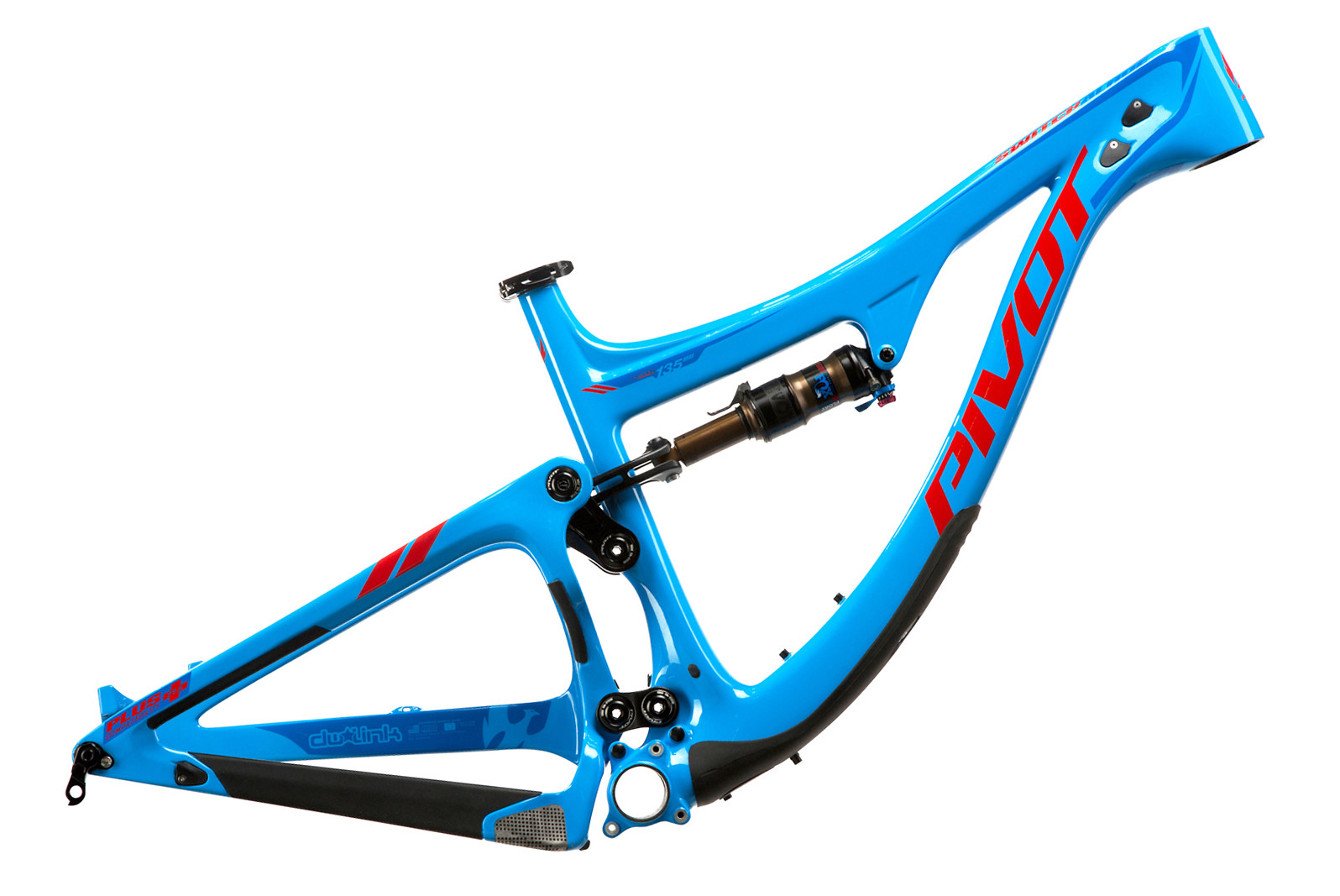










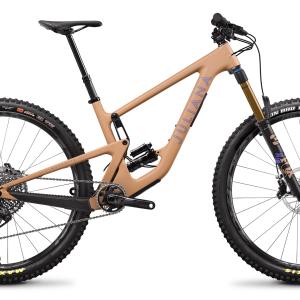
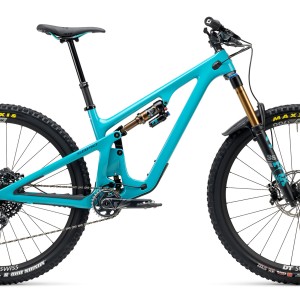
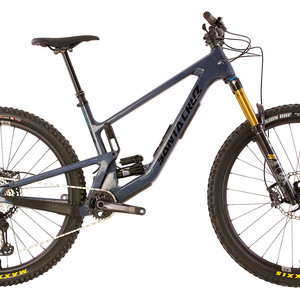



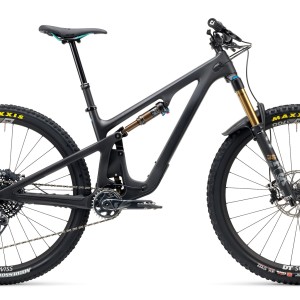








12 comments
Post a reply to: First Look, First Ride: 2017 Pivot Switchblade 29/27.5+